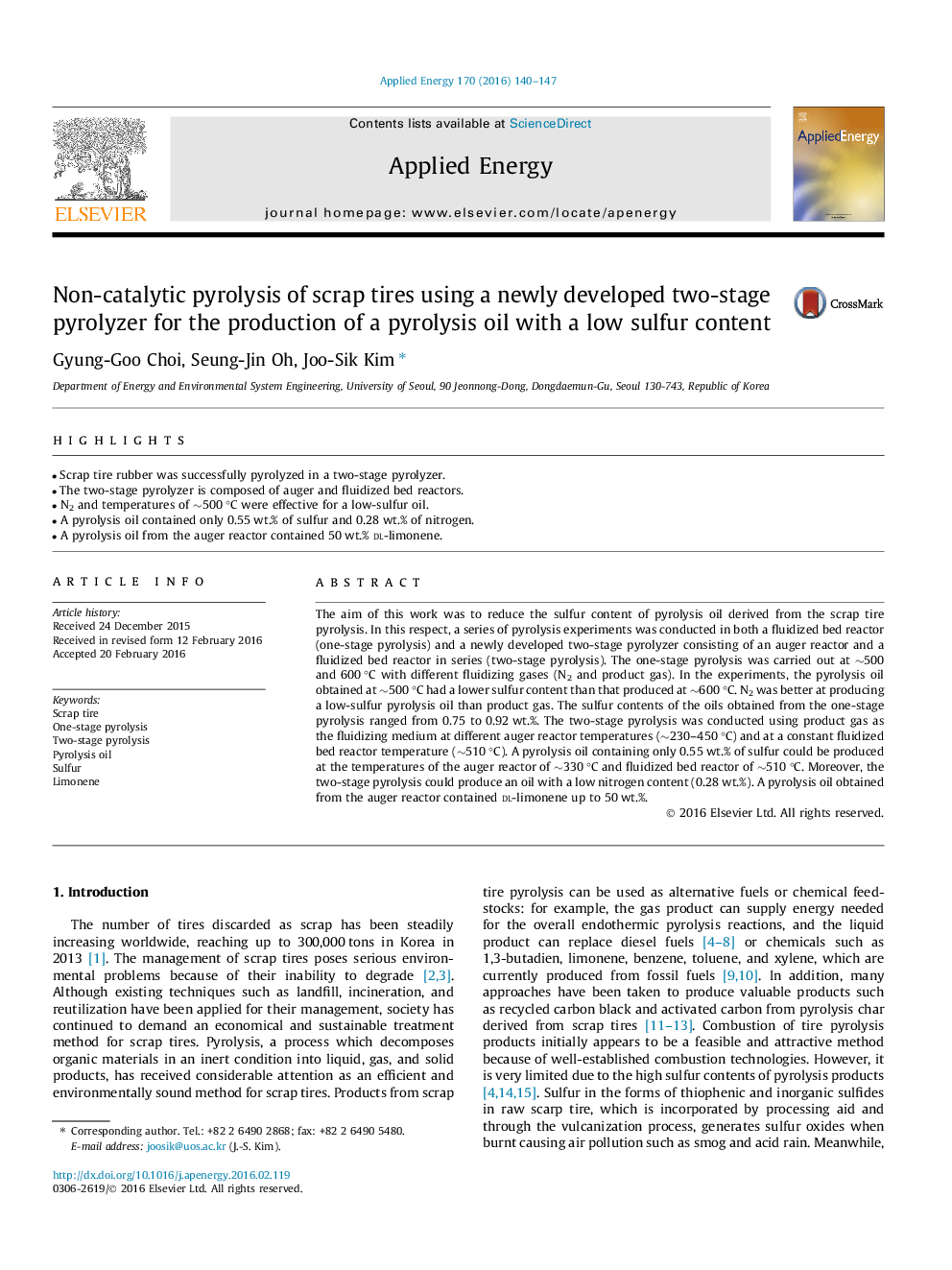| Article ID | Journal | Published Year | Pages | File Type |
|---|---|---|---|---|
| 6683416 | Applied Energy | 2016 | 8 Pages |
Abstract
The aim of this work was to reduce the sulfur content of pyrolysis oil derived from the scrap tire pyrolysis. In this respect, a series of pyrolysis experiments was conducted in both a fluidized bed reactor (one-stage pyrolysis) and a newly developed two-stage pyrolyzer consisting of an auger reactor and a fluidized bed reactor in series (two-stage pyrolysis). The one-stage pyrolysis was carried out at â¼500 and 600 °C with different fluidizing gases (N2 and product gas). In the experiments, the pyrolysis oil obtained at â¼500 °C had a lower sulfur content than that produced at â¼600 °C. N2 was better at producing a low-sulfur pyrolysis oil than product gas. The sulfur contents of the oils obtained from the one-stage pyrolysis ranged from 0.75 to 0.92 wt.%. The two-stage pyrolysis was conducted using product gas as the fluidizing medium at different auger reactor temperatures (â¼230-450 °C) and at a constant fluidized bed reactor temperature (â¼510 °C). A pyrolysis oil containing only 0.55 wt.% of sulfur could be produced at the temperatures of the auger reactor of â¼330 °C and fluidized bed reactor of â¼510 °C. Moreover, the two-stage pyrolysis could produce an oil with a low nitrogen content (0.28 wt.%). A pyrolysis oil obtained from the auger reactor contained dl-limonene up to 50 wt.%.
Related Topics
Physical Sciences and Engineering
Energy
Energy Engineering and Power Technology
Authors
Gyung-Goo Choi, Seung-Jin Oh, Joo-Sik Kim,
